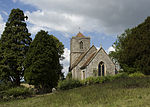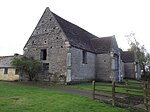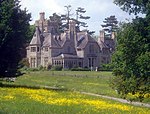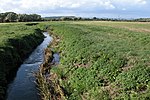South Wales Gas Pipeline
The South Wales Gas Pipeline (also known as the Milford Haven pipeline) is the UK's largest high-pressure gas pipeline. The 197-mile (317 km) pipeline passing through Wales was built for National Grid plc and links South Hook and Dragon liquefied natural gas (LNG) terminals at Milford Haven, Pembrokeshire with the national gas network at Tirley, Gloucestershire. The pipeline was expected to cost around £700 million, and was, according to the National Grid, expected to transport around 20% of the gas needed to meet UK consumption in future. Construction of the pipeline was estimated to take approximately three years, aiming to end in October 2007. Environmental controversy surrounded the decision to build it, especially through sections of the Brecon Beacons National Park where the National Park Authority called it a "huge blow". The pipeline was completed in November 2007.
Excerpt from the Wikipedia article South Wales Gas Pipeline (License: CC BY-SA 3.0, Authors).South Wales Gas Pipeline
Tirley Knowle,
Geographical coordinates (GPS) Address Nearby Places Show on map
Geographical coordinates (GPS)
| Latitude | Longitude |
|---|---|
| N 51.965 ° | E -2.256 ° |
Address
Tirley Knowle
Tirley Knowle
GL19 4HE , Tirley
England, United Kingdom
Open on Google Maps











